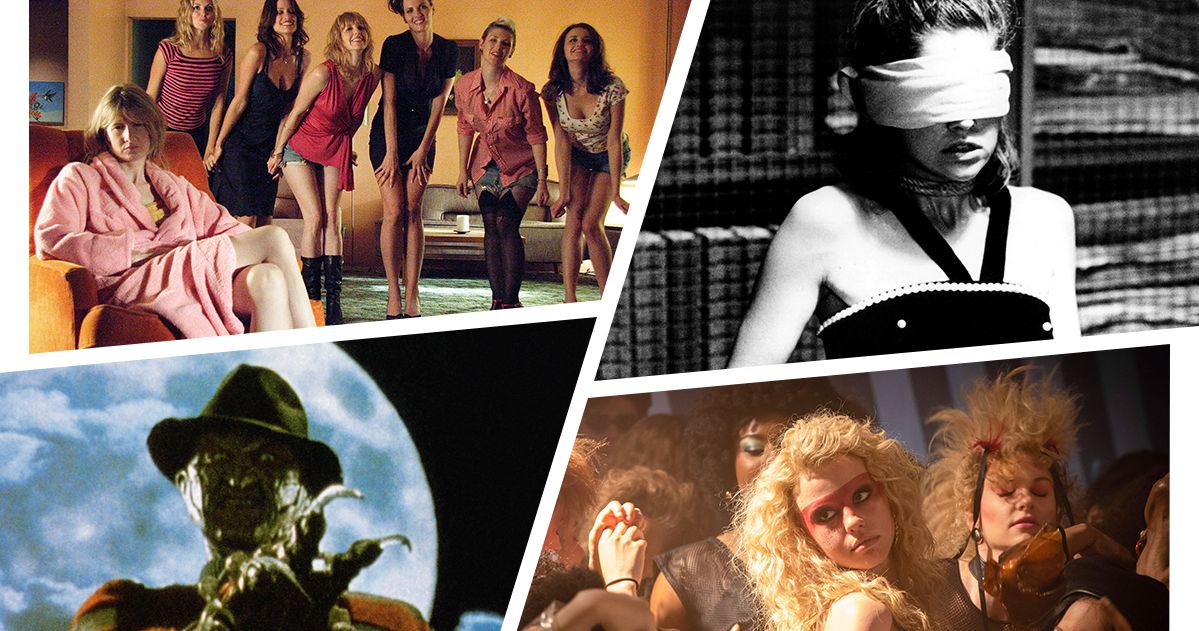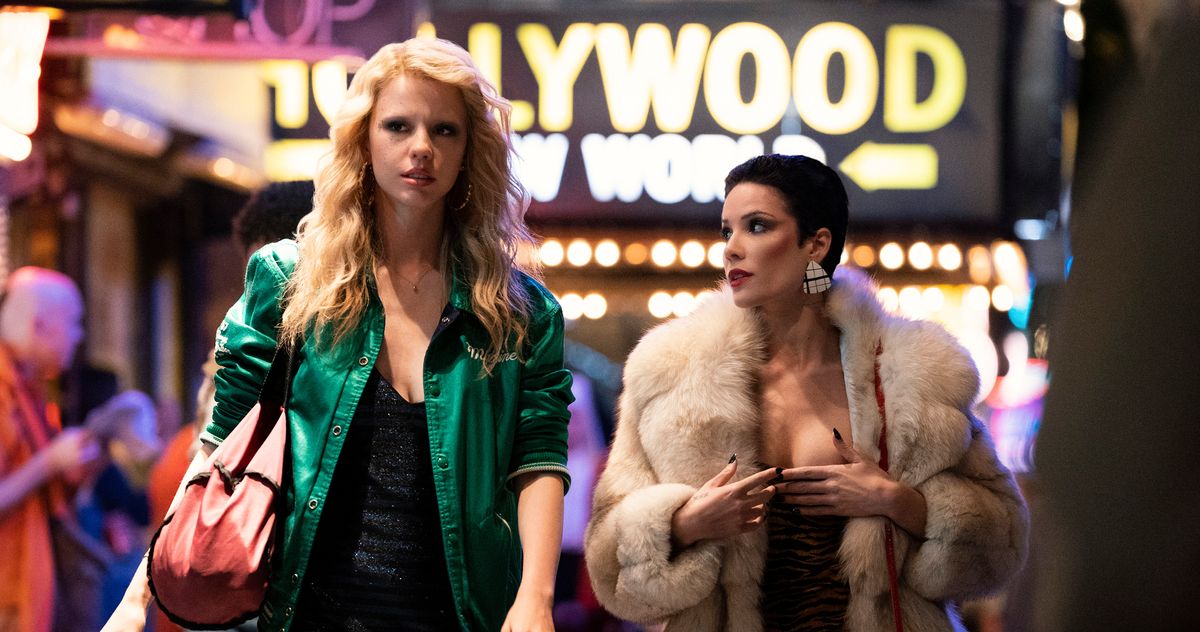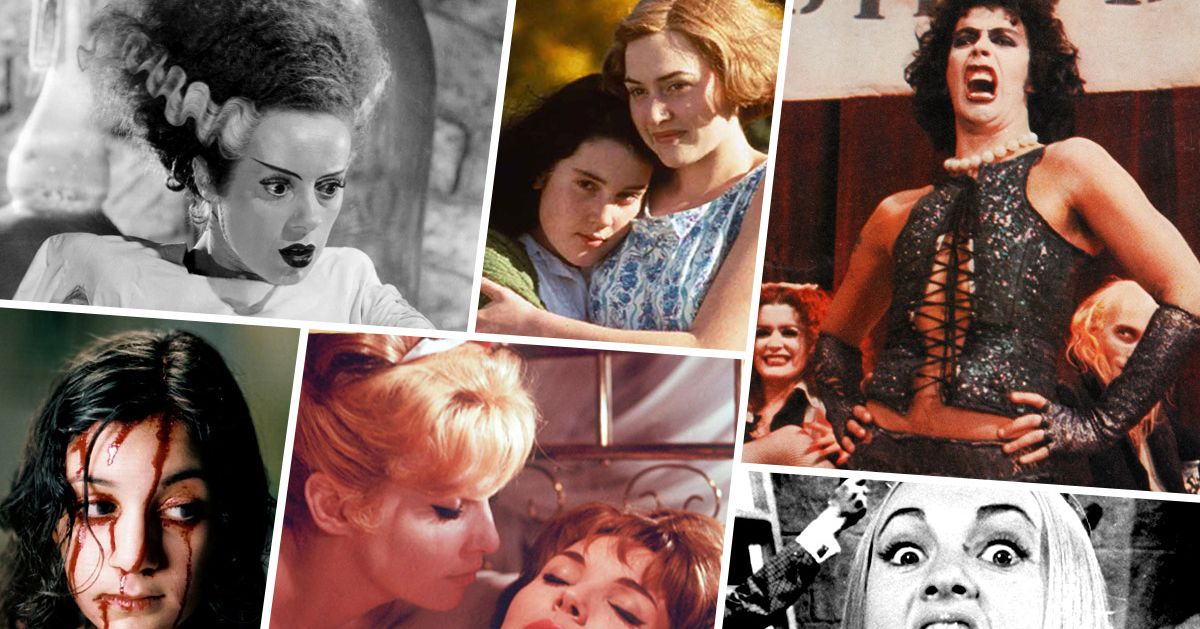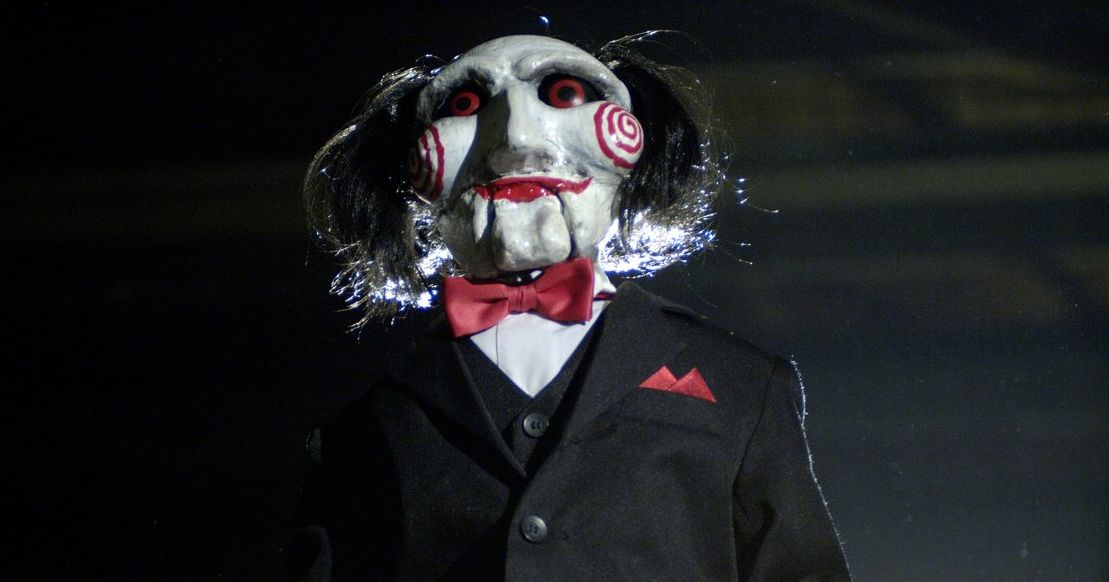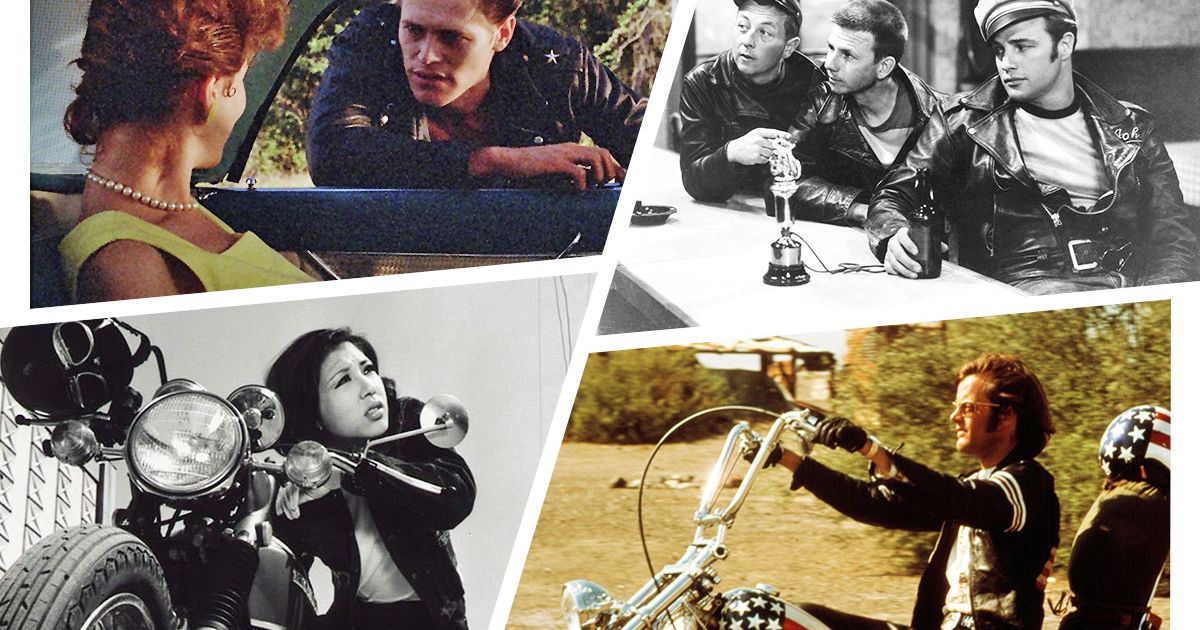Photo-Illustration: Vulture; Photos: Everett Collection (Studio Canal, Orion Pictures, Justin Lubin/A24, New Line)
First thing you gotta know about showbiz is how tough it can be. No matter how starry-eyed your dreams of fame and fortune make you, it’s best to remember that you may not be cut out for it — and if you’re in a showbiz horror movie, you may be cut out of it literally.
Ti West’s MaXXXine, the concluding chapter in his trilogy looking at the slasher genre’s relationship with 20th-century entertainment, makes good on Pearl’s promise to be recognized as a star; expect Tinseltown, Hollywood legacies, and a medically inadvisable amount of seediness. But it’s by no means the first film to recognize the veneer of celebrity as fertile ground for salacious, disturbing narratives. Horror films set in Hollywood, critiquing its fanatic appeal or implicating everyone complicit in its ongoing abuse and exploitation, have been around for decades.
The best possible outcome for dreams of stardom is fame, fortune, and a fantastic legacy, while the worst possible outcome is some variation on surreal, ambition-related psychosis, being butchered in shadowy production lots, and the meticulous craft of making a movie being ironically mirrored in a murderer’s modus operandi. Tons of horror films argue that Hollywood’s dream is killing us; the promise of glitz and glamour actively encourages desperate people to render themselves vulnerable to horror’s malign grip.
All that grim stuff aside, most horror movies about showbiz are also funny! The cartoonishness of the industry’s façade and the whiplash of injecting it with grisly violence lends itself to self-parody, camp, or acid-tongued satire. We delved into the vaults to find the best horror movies about showbiz ahead of MaXXXine seeing her name up in lights.
Dario Argento has made much more precise, subversive, and provocative giallos than Opera, but it’s hard to deny the luscious scale of what was at the time his most expensive production to date. It also feels like a capstone to the filmmaker’s impeccable run through the ’70s and ’80s, where he underlines his sadistic, off-kilter brand of horror with an expressive, theatrical vibe — very fitting for a film taking place during a grand Verdi production in one of Italy’s most historic opera houses. (Opera is Hollywood for Italians.) The swelling emotions of the opera performance, however, are no match for a masked killer sneaking around committing grisly murders that he forces our ingenue soprano lead (Cristina Marsillach) to watch. It’s impressive that Argento can take such a theatrical style and still find a confronting intimacy — now we’d love to see a staged opera version of Suspiria, please.
This self-reflexive meta-slasher was Wes Craven’s return to his landmark franchise, as it breaks Elm Street continuity and takes place in the real world, where actress Heather Langenkamp (herself) finds the walls between film sets and reality crumbling. To sum up, a real demon haunted the director’s nightmares, and he was able to control its malignant powers by depicting it as Freddy Krueger across the original series — and now this neo- or proto-Freddy is going to rip Heather’s family apart. New Nightmare is an audacious studio horror with real faults (it gets close to some incredible psycho-horror but fumbles the payoffs; it’s about 20 minutes too long), but coursing through the film is an unsettling concept. Even if personal artistic expression was therapeutic for this fictionalized version of Craven, the expanded capitalist scope of a movie series ends up aggravating the forces of darkness that actors like Langenkamp and Robert Englund profited from. If the silly Elm Street sequels turned Freddy into a clownish figure, then his metaphysical inspiration will emerge darker and crueler than could be imagined on the safety of a film set.
For a film that has the reputation of being the worst Scream movie, it’s pretty good! Yes, the formula established and rehashed in the first two installments has been sucked free of a lot of joy and inventiveness, but it’s fitting that when the series relocated to a Los Angeles setting (where our Woodsboro characters witness the events from the first film being restaged for a Stab sequel), everything feels more brutal and bombastic. It’s a souped-up, hollow film for a souped-up, hollow place. There’s no better spot than studio lots for unearthing seedy secrets, although the film’s criticisms of systemic Hollywood exploitation are greatly harmed by how overt the Weinstein presence is on this Miramax production. It is, however, the first of two films on this list with a Carrie Fisher cameo, which is always welcome.
For those who are still replaying that Robert Eggers Nosferatu trailer and can’t believe Willem Dafoe was not cast as the titular vampyr, you’ll be glad to know that Shadow of the Vampire exists. It’s a film where Dafoe plays a real vampire playing a fictional vampire (Count Orlok, the actual name of Nosferatu) who F. W. Murnau, director of Nosferatu (1922), convinces the cast and crew is not a vampire but an obscure theater actor, Max Schreck. It blends dramatized accounts of making a pioneering horror film and intense gothic fascination with a strange creature hiding in plain sight, and like Bram Stoker’s Dracula (1992), it finds common ground with the spread of the vampire myth and the early days of cinema. This film gets credit for making simmering gothic horror out of what sounds like a terrific sitcom premise.
You’re either of the opinion that this is where the Chucky franchise went off the rails, or this is where the Chucky franchise went off the rails and landed cleanly on an entirely new and insane set of rails. Here, Chucky and his bride, Tiffany, go to Hollywood, where they’re used as lifeless animatronic puppets for a film version of the Chucky urban legend. They’re brought back to life by their child, a genderqueer doll called Glen/Glenda, and immediately launch into more depraved violence, kidnapping Jennifer Tilly and Redman (themselves) to transfer their consciousness into their bodies. If there’s one person who can perfectly straddle earnest terror and pantomime pastiche, it’s Tilly. Seed of Chucky takes the heightened black comedy of Scream’s satire and pushes it into full camp without skimping on any gruesome kills — John Waters gets his face melted with acid, ladies and gentlemen!
If Mark Fisher was correct in saying that Inland Empire is like “witnessing a direct feed from the unconscious,” then the transmission itself has come from the radio tower in the RKO Radio Pictures production logo. That is to say: The nightmares that make up the film are the product of years of Hollywood dreaming and image-making. In his first feature-length digital project, Lynch undercuts the Technicolor glamour of his previous media pastiches (the knowing saccharine soapiness of Twin Peaks, the unnerving artifice of Mulholland Drive) to give a three-hour descent about an actress (Laura Dern) on a path toward a dirty, exposed stretch of Hollywood Boulevard pavement — and along the way, we’re thrown into states of pants-wetting terror and numbing anxiety. Mulholland Drive was scary, but it also stressed the erotic and sensory texture of believing in a dream town built on pain. Inland Empire corrodes its genre motifs at every stage: Noir, mystery, melodrama, and one crazy dance scene all feel subservient to the trembling eeriness humming through Lynch’s epic — no matter what we recognize about showbiz, there’s a palpable sense we are in the wrong place.
Brandon Cronenberg (son of David, more on him below) made his debut with a sterile and pallid sci-fi noir in which our capitalist version of the celebrity-consumer hierarchy has been stripped of all joy and color — but retained its inherent fanaticism and invasiveness. Set in a world where people can purchase viral loads from their favorite public figure whenever they fall ill just to feel close to them, one sickly-looking man (Caleb Landry Jones, ’cause who else are you gonna get to look like that?) gets caught up in the illicit “celeb meat market” surrounding this industry. Antiviral is just as airless and measured as Cronenberg Sr.’s 21st-century work and often veers into the too-direct, “wouldn’t this be mental” commentary of the Black Mirror variety — but there’s something squirmy but recognizable about this celeb culture’s promise of constructed, self-destructive intimacy.
Set far away from the glitz and glamour of red carpets and packed movie houses, this ode to the isolating craft of unprestigious film production injects you with a deep distrust of the artifice separating real and artificial horror. A sound engineer (Toby Jones) travels to an Italian horror studio to record some squishy, squelchy, and generally sickening Foley for a giallo film, but his own psychological hang-ups soon start invading the impersonal-but-visceral postproduction haven. Director Peter Strickland always applies such a curious and lo-fi perspective to recognizable genre archetypes, and this horror tale of losing yourself in film (not in a fun way) occupies a unique space in the margins of moviemaking.
Not the most sophisticated or thought-provoking film, this broad comedy from Seth Rogen and Jay Baruchel about millennial Hollywood stars facing a biblical apocalypse during one of James Franco’s house parties does admittedly feature quite a lot of A-list celebrities facing terror from a demonic realm. The only problem is that most of these celebrities are friends of Rogen, so their reaction to face-melting horror is usually some variation of “oh shit!” But instead of a filmmaker looking at celeb culture from the outside in, we get an interesting new perspective from a group of self-aware comedians pastiching themselves with skewed, heightened versions of their own star status. Hey, most of these guys just play themselves in every movie; at least they do literally play themselves here.
Is Starry Eyes too direct, or is the bluntness of its horror metaphor the point? The 2014 psychological cult horror (as in, a horror about cults) tracks the stripping of agency from aspiring actress Sarah (Alexandra Essoe) as she warily steps further into producers’ abusive reach. Erratic behavior, bodily mutations, and hallucinations line her journey to industry approval, with striking imagery from future Pet Sematary directors Kevin Kölsch and Dennis Widmyer whenever Sarah gives dubious consent to transforming her body on the whims of Hollywood’s powerful. On one hand, Starry Eyes’ equating of abusive, self-protecting elites with literal Satan worshippers feels didactic and simple; on the other, there’s something visceral and uncomfortable about making an unmistakable connection between the conspiratorial evil of the horror genre and the open secrets that the industry still refuses to address.
One of the most overt and salacious Hollywood satires, you could tell Map to the Stars was made by someone with expert horror instincts even if you didn’t know it was from David Cronenberg. The Canadian maestro shot in America for the first time in his career (but production only moved to Los Angeles after principal photography in Toronto) for a venomous take on the sun-bleached and anxiety-ridden City of Angels. There’s some titanic work here from Julianne Moore in motifs and moods from classic L.A. noir like Chinatown and Sunset Boulevard — but with all the obsessive and perverted themes dialed up to a delirious pitch. When they combine with Cronenberg’s stifling, withdrawn “late style,” it creates an uncanny, unpleasant vibe that’s delightful to dive into.
Set in one of the other exploitative industries centralized in Los Angeles, the fashion industry, this divisive film proved to be another reason why a lot of the fans waiting for another Drive from Nicolas Winding Refn were doomed to be forever disappointed. But for fans of immaculate-looking women festering a dark, envious rot from within a vice-ridden corner of the world, it’s hard to fault The Neon Demon. After the death of her parents, Jesse (Elle Fanning), an underage model, arrives in Los Angeles looking for success and guidance and soon becomes an object of fascination for harpy-esque models suffering intensely from the psychosis-inducing misogyny of their work culture. For all the ambiguous story beats and extended synth-scored sequences of Fanning catwalking into a glowing triangle, The Neon Demon picks up in a barbaric final act that crystallizes Refn’s themes in shocking images and acid-tongue dialogue. It’s a film that shows remarkable restraint by not dropping the line “You look good enough to eat.”
There have been a couple found-footage movies about Hollywood (the violent and unpleasant porn-star-killer film Lucky Bastard comes to mind), but seeing as how the genre is about careful, unpolished documentation, you’d think it would be used more to fictionalize people and processes behind the scenes. Nevertheless, this charming and ominous feature debut from Ryan Schafer and Ian Tripp easily fits the bill. It’s a darkly comedic look at filmmaking labors of love, where aged cult filmmaker Alfred Costello (Vinny Curran) tries to repair a damaged legacy by staging one last passion project, ominously titled “Everybody Dies by the End.” Costello is a domineering presence on the remote mountain ranch set, badgering his male and female leads to act better and enjoying cultlike devotion from his uniformed crew, but the behind-the-scenes documentarians filming Costello’s efforts soon bear witness to an upsetting filmmaking practice that goes beyond dedication to craft. Schafer and Tripp’s film hits a lot of routine “slowly realizing you’re in danger” thrillers, but the tonal and aesthetic shift from grindhouse filmmaking pastiche to found-footage terror is deftly done.
Coralie Fargeat followed up her throat-catching debut, Revenge, with a heightened, glossy, and nasty look at a heightened, glossy, and nasty town, with a disturbing, body-horrific take on Hollywood’s rules for how women are permitted to age in the industry. After being pushed out of her exercise television show, middle-aged celebrity Elizabeth Sparkles (Demi Moore) starts experimenting with a clandestine bio-product that allows her to birth a new, younger self (Margaret Qualley) who will take turns living celebrity life to the fullest. The Substance, in its best moments, taps into a Fifth Element or Showgirls “here is a European director pointing out all the weird, accepted excesses of American life” energy that’s always a hoot. Body horrors, especially splintered-self ones, works best if we’re pressed into an uncomfortably intimate space with the opposing doubles, something that Fargeat evades throughout the 140-minute run time. But in choosing to platform the squelchy and gooey streaks of the genre — especially in a jaw-dropping, Frank Henenlotter–riffing climax — we instead get an explosive and unmistakable attack on Hollywood’s mandate of physical perfection.
It’s taken two movies and two years, but finally someone gets to be a star in one of these Mia Goth x Ti West films. After committing senicide in X, Maxine Minx (Goth) hightailed it to Los Angeles and made her career in porn but now wants to graduate to mainstream entertainment with the scandalous religious-horror sequel The Puritan II. A fun twist on this much grander and more mainstream trilogy closer is that it’s basically a giallo mystery, with a black-gloved killer and obscene kills bathed in vibrant colors, all pointing our heroine toward a personal and dangerous mystery. We once again approach porn and horror as marginalized (and therefore potentially radical) art, now with the sour context of subversive expression being flattened by a moralizing, arch-conservative capitalist hierarchy. But what makes MaXXXine shine is that, more than either entry in West x Goth’s trilogy, the film indulges in the pure joy of the dark, splatterful noirs it so palpably admires — it’s like if all those vulgar nasty VHS horror films were allowed a cane-twirling, firework-popping celebratory musical number.




